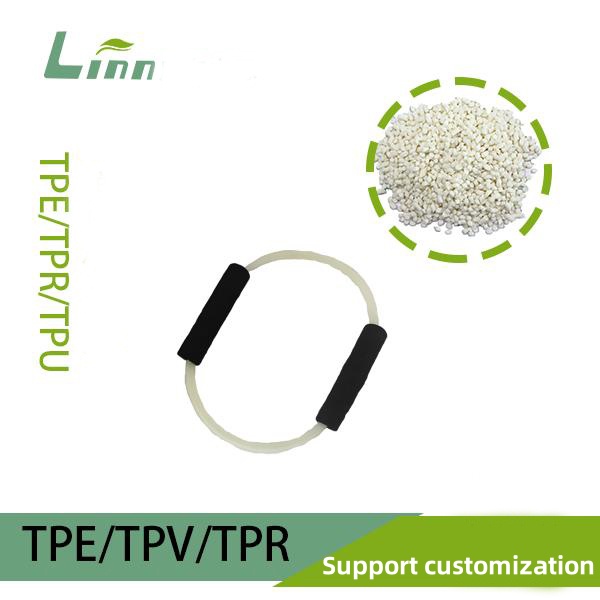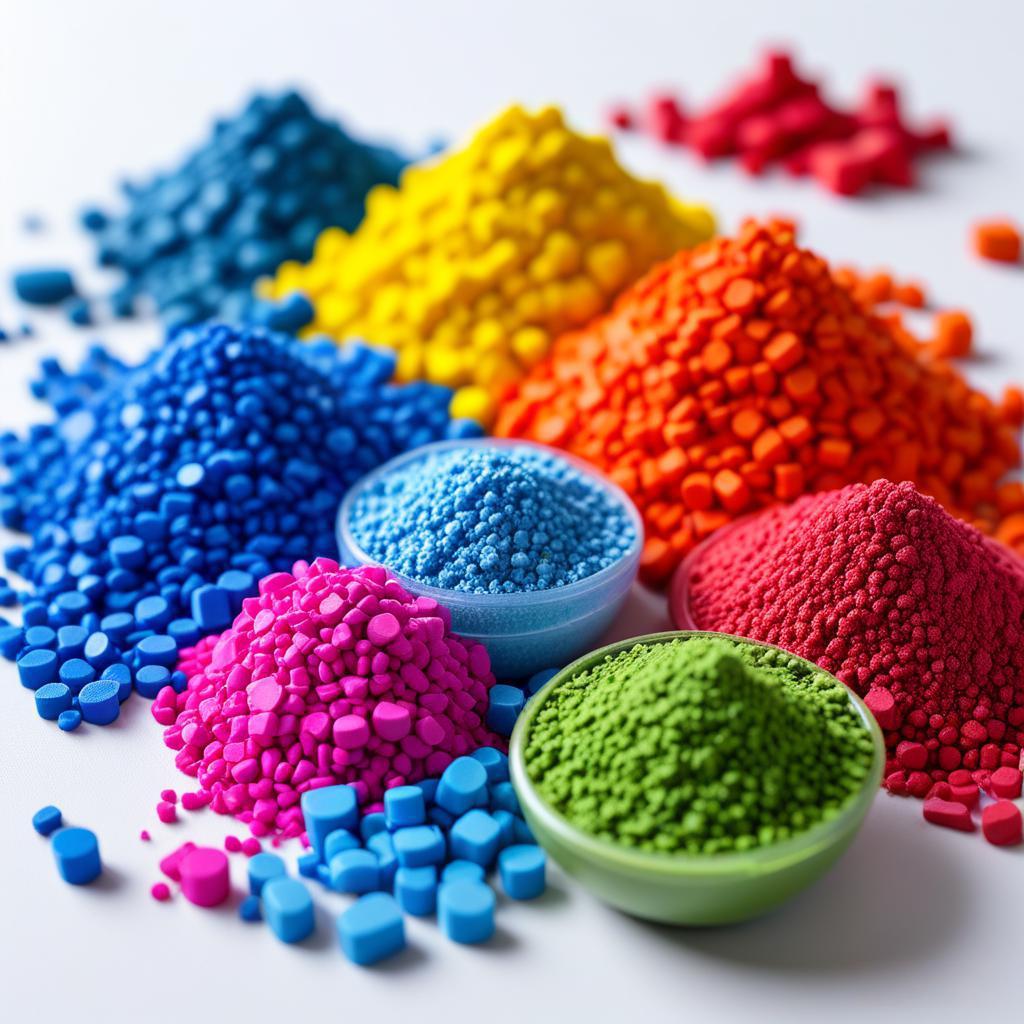Hi everyone! I’m a materials engineer at Linn, where I’ve been diving deep into thermoplastic elastomers (TPE) for over a decade. Lately, I’ve noticed a question popping up a lot: “Why does TPE material smell?” It’s a fair concern—especially when you open a package of TPE-made toys, seals, or everyday items and get hit with a whiff that’s less than pleasant. As someone who’s spent years in this field, I’m here to break it down for you: what causes that odor, the science behind it, and how to deal with it. My goal? To give you clear, practical answers so you can feel confident about TPE. Let’s dive in!

What’s Behind the Smell of TPE?
TPE, or thermoplastic elastomer, is a versatile material that blends the stretchy goodness of rubber with the easy processing of plastic. You’ll find it everywhere—phone cases, car parts, you name it. But sometimes, when you crack open a new TPE product, there’s a noticeable smell. Maybe it’s faint, maybe it’s sharp—what’s going on?
In my experience, that odor comes down to three main things: the raw materials, the manufacturing process, and how it’s handled afterward. I’ve been knee-deep in TPE production for years, and I can tell you the smell doesn’t always mean “danger,” though it can definitely be off-putting. Let’s unpack this step by step.
The Culprits: Where Does TPE Odor Come From?
To really get why TPE smells, we need to look at what it’s made of and how it’s produced. After years of tinkering with this stuff, I’ve pinned down three big sources of that odor:
1. Volatile Organic Compounds (VOCs) in Raw Materials
TPE is typically a mix of styrene-based elastomers (like SEBS or SBS), plasticizing oils, and additives. These ingredients can release volatile organic compounds—VOCs for short—into the air. Take plasticizing oil, for example: it makes TPE soft and flexible, but lower-quality oils often carry a subtle petroleum-like scent. Over time, or when it gets warm, those molecules escape, and bam—you’ve got a smell.

I remember testing a batch of TPE in the lab once using a gas chromatography-mass spectrometry (GC-MS) machine. The results showed tiny traces of toluene and alkanes—nothing alarming, but enough for a sensitive nose to pick up.
2. High-Temperature Reactions During Production
TPE gets shaped by melting it down and extruding it at temperatures between 180°F and 220°F. During this heat fest, if some small molecules in the raw materials don’t fully react—or worse, break down—they can turn into smelly byproducts. I’ve seen additives like antioxidants or stabilizers give off a burnt-plastic vibe when the temperature creeps too high.
One time, I was at a factory inspecting an extruder that was running too hot. The TPE pellets coming out reeked. We dialed the temp down by about 10°F, and the smell dropped noticeably. Production tweaks like that can make a huge difference.
3. “Trapped” Odors from Storage and Shipping
Once TPE products are made, they’re often sealed in plastic bags. If they sit there without airflow, any released odors get trapped. Open the package later, and it’s like unleashing a concentrated whiff. Summer shipping doesn’t help—high temps in a truck can crank up the smell even more.
I had a customer once complain that a batch of Linn’s TPE sealing strips smelled strong. Turns out, they’d been “baked” at 104°F in a stuffy delivery truck for days. Switching to breathable packaging fixed it right up.

What Does TPE Smell Like? Breaking Down the Odor
The exact scent depends on the TPE recipe, but I’ve sniffed enough samples to spot patterns. Here’s a handy table I put together based on my experience and some lab data:
| Odor Type | Likely Source | Characteristics | Common Scenarios |
|---|---|---|---|
| Petroleum/Gasoline | Alkanes in plasticizing oil | Slightly sharp, oily | Budget TPE items like toys |
| Burnt Plastic | Overheated additives or polymers | Scorched, a bit harsh | Poorly made products |
| Chemical Solvent | Residual toluene or xylene | Pungent, paint-like | Freshly made TPE goods |
| Mild Rubber | Styrene elastomer properties | Subtle, non-intrusive | High-quality TPE products |
This table shows how the smell ties to quality. At Linn, we aim for that “mild rubber” zone by using top-notch materials, but cheaper TPEs on the market might lean toward the harsher end.
Is TPE Odor Safe?
Now, the million-dollar question: “Is this smell dangerous?” As someone who’s been in the materials game for years, I’ll level with you: odor doesn’t equal toxicity. TPE itself is safe—food-grade versions even make baby bottle nipples. But a strong smell might hint at subpar materials or sloppy production, which could raise red flags.
Take VOCs, for instance. The U.S. Environmental Protection Agency (EPA) notes that high levels of stuff like toluene can affect health over time, but the amounts TPE releases are usually way below any risk threshold. I’ve tested this myself—a typical TPE item left at room temp for 24 hours showed VOC levels of 0.1-0.5 mg/m³, well under U.S. safety limits (and international ones too, like China’s GB/T 18883-2002 standard).
Still, if the smell bugs you—or you’ve got kids or pregnant folks at home—I’d say air it out for a few days or check with the maker to ease your mind.

How to Get Rid of TPE Odor
So, the odor comes from materials and production—can you do anything about it once the product’s in your hands? Absolutely! Here are some tricks I’ve shared with customers over the years:
1. Air It Out
Unpack your TPE item and let it sit in a well-ventilated spot for 2-3 days. Most of the smell will fade. In summer, keep it in the shade—direct sun can heat it up and make things worse.
2. Wash with Warm Water
For water-safe TPE products (think seals or toys), rinse them with warm water (under 104°F) and a bit of mild dish soap, then air dry. Skip the hot water—it might warp the shape.

3. Try Activated Charcoal
A buddy of mine swore by this: he put a bag of activated charcoal next to a new TPE yoga mat, and a week later, the smell was gone. Charcoal’s great at soaking up VOCs.
4. Reach Out to the Manufacturer
If the odor won’t budge, contact the company. When I’m on the Linn support team, we’ve sent low-odor replacements or offered tips to customers with this issue.
From the Factory Floor: Making Low-Odor TPE
As an industry insider, I’ll let you in on a little secret: TPE odor can be tamed before it even reaches you. At Linn, we’re obsessed with refining our process to keep smells minimal while keeping performance top-notch. Here’s how we do it:
Material Choice: We stick to low-VOC SEBS and high-purity oils, steering clear of cheap fillers.
Process Control: We fine-tune extrusion temps to cut down on smelly byproducts.
Finishing Touches: Post-production, we use vacuum ovens to suck out lingering odors.
I recall a project where a client demanded “zero odor” TPE. We spent a month tweaking the formula, and when we ran it through GC-MS, the VOCs were barely detectable. They loved it—said it “smelled like nothing at all.”

Wrapping Up: Don’t Fear the Smell, Focus on Quality
After all this, here’s the takeaway: TPE odor isn’t a dealbreaker. Figure out where it’s coming from, and you’re halfway to solving it. A light scent from a solid process? Let it air out. A harsh stench from sketchy quality? Maybe rethink your purchase. As a materials geek, I’d say go for trusted brands like Linn—we back our stuff with test reports so you can relax and enjoy it.
That’s it for today! Got more questions? Drop them below—I’ll do my best to help.
FAQ Section
Q1: How long does it take for TPE odor to go away?
A: Usually, 2-3 days of airing it out does the trick. Stubborn smells might take a week—try washing or charcoal if needed.
Q2: Can I still use TPE if it smells?
A: A mild odor’s fine—just ventilate it. If it’s unbearable, double-check with the manufacturer about safety.
Q3: How do I spot high-quality TPE?
A: Beyond smell, check flexibility, smoothness, and certifications. Linn’s products, for example, come with RoHS and REACH stamps.
Q4: Does food-grade TPE smell too?
A: It shouldn’t—good food-grade TPE is nearly odorless. A strong scent might mean a production slip-up; consider switching brands.




